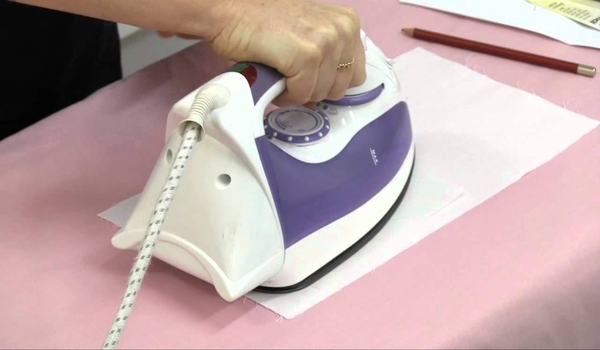What are iron-on transfers? Types, Pros, Cons, and Tips
Iron-on transfers are labels and images that can be ironed onto fabric. These are used for all kinds of things like labels, decals, crafts, and more. These types of transfers can be removed by simply peeling them off without any damage to the surface. They are also reusable and easy to apply.
Iron-on transfers are a great way to make your clothes look new. They do not require sewing and can be applied to any material. You can also use them on your craft projects or even as a replacement for a decorative pin.
How does the iron-on transfer work?
Iron-on transfers are made with a thin paper-like material coated with a liquid adhesive. The liquid sealant is mixed with iron powder to produce a liquid applied to the backside of the paper layer. When the fabric is pressed, the liquid makes a bond between the adhesive layer and the fabric.
If you are looking for an instant way to make something pop, iron-on transfers are the way to go. These come in pretty much any shape or pattern that you want, including custom pieces. Just print what looks best on fabric, then press it with an iron or use a heat press.
The transfer looks like it came from a professional because the liquid adhesive bonds the two layers together.
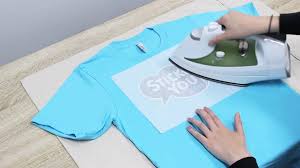
Types of iron on transfers
Iron on labels
Iron-on labels are plastic labels that are made for ironing onto fabric. The label is usually made of polyester with a paper backing so it can be ironed on.
The label adheres to the fabric by either melting the label to the fabric or melting it with an iron. The label can also be slid on, but it is harder to remove. Labels are usually used to label clothing.
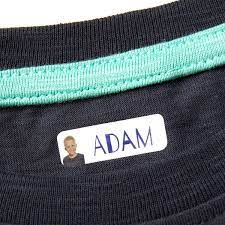
Iron-on fabric
An iron-on fabric is a fabric that can be easily sewn onto clothing with the use of an iron. Iron-on fabric is typically made of a material that can be ironed onto cloth, such as cotton, polyester, or fleece.
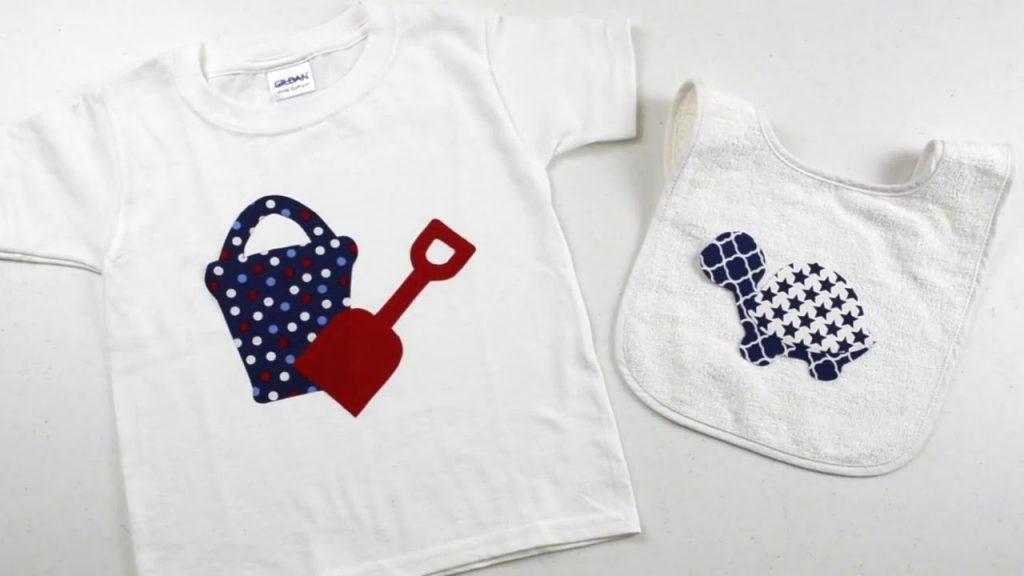
Iron on appliques
Iron on appliqué is a type of decal used to decorate clothing. The design is printed on a sticky sheet that has a coating on one side to make it iron-friendly. The sheet is then placed on the fabric, where it adheres to the material with heat from an iron.
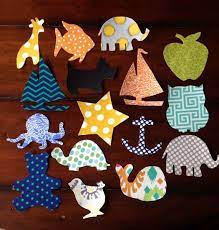
What are the Types of iron-on transfer inks?
Iron-on transfer inks are classified by the number of transferable colors and the number of heat settings on the presser foot.
Single color iron-on transfer inks
With the use of single-color iron-on transfer inks, you can easily create temporary or permanent designs on clothing. These inks are made to be used with heat. The ink is applied using a domestic iron at around 200 degrees Celsius for about 3 minutes. There are many different colors to choose from, but they are all priced under $10.
Multicolor iron-on transfer inks
Iron-on transfer inks have been around for decades but have recently been upgraded with a new technology called multicolor iron-on transfer inks. These inks easily print onto fabric and can create a wide range of highly personalized designs for everything from T-shirts to purses.
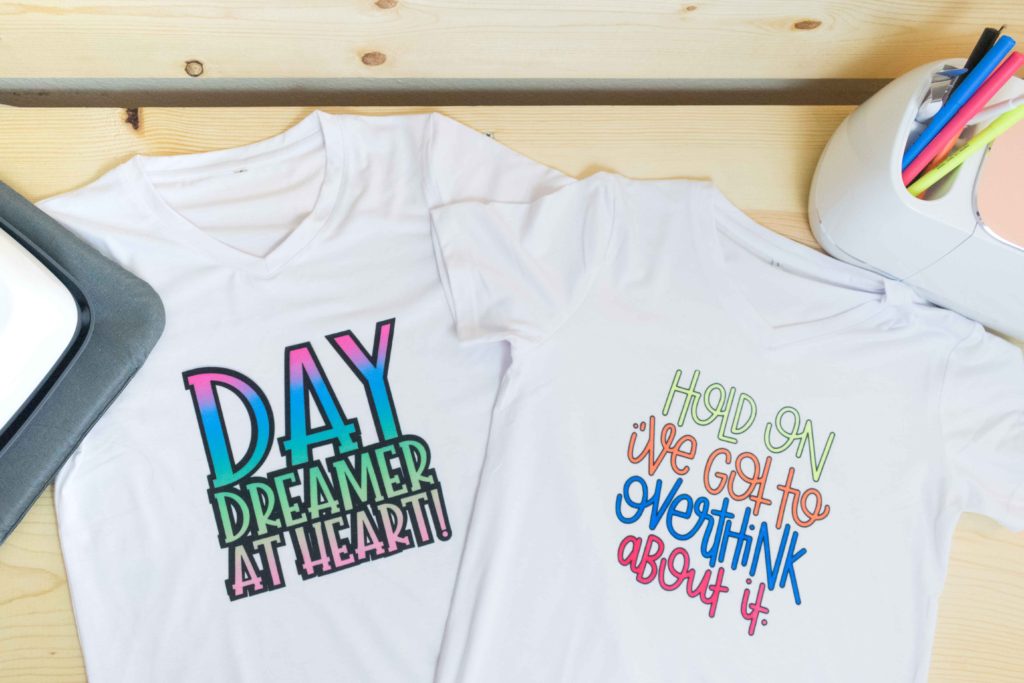
Advantages of iron on transfers
- They are economical, sometimes costing just a few cents each.
- Iron-on transfers can be applied in a variety of sizes and shapes. The transfer material is very thin, so it can be applied to many different surfaces without showing through.
- They are easy to use, requiring no additional equipment or materials.
- Iron-on transfers can be easily removed or replaced with new ones without damaging the underlying material.
- You can use a heat press machine too.
- Iron on transfer paper is waterproof, which makes it easy to clean the surface
- Composite materials can also be applied to the surface of the transfer without showing through.
- Iron-on transfers are more durable than other methods.
- There is no or very little mess during the process.
Disadvantages of iron on transfers
- Sometimes unnatural brownish color
- If iron-on transfers are not pre-cleaned, the ink will sometimes transfer unevenly.
- They can be complicated to use occasionally.
Tips
- Prefer dark-colored garment
- Put the printer into draft mode
- Use a thin layer of the garment fabric paper (not the shiny side)
- The iron should be placed on the shiny side of the fabric
- The iron should be set to a medium heat setting and moved in a circular motion
- It should be applied in a steady motion and should not be flipped over the garment fabric-side down while
Are iron on transfers washable?

Yes, iron-on transfers are washable. Iron on transfer is a fantastic way to decorate your clothing. They are usually made out of vinyl and can be applied with ease. To be extra careful, you should wash it using cold water and mild soap. You should also avoid using harsh detergents or scrubbers because they could damage the transfer.
How to make iron on transfer?
- Gather your supplies: iron-on transfer paper, A heat press machine (or an iron), a computer with printer, and the image you want to transfer.
- Print your image onto the iron-on transfer paper using a laser printer or copy machine. Make sure the image is printed in the correct orientation (mirror reversed) for the type of paper you are using.
- Carefully cut around your printed image with scissors or an X-acto knife. Do not leave any white paper around your image as this will interfere with the transfer process.
- Place the cutout of your image face down on the surface you want to apply it to. Use a protective pressing cloth such as cotton fabric or parchment paper between your image and ironing surface to prevent damage to either one during the heat application process.
- Use a heat press machine with proper temperature, pressure and time settings. If you do not have one, set your iron to its hottest setting (without steam). Slowly move it over top of the pressing cloth and hold it there for 10-15 seconds at a time until all areas have been heated evenly. Allow the project to cool completely before handling it or removing the pressing cloth from underneath.
- Peel back a corner of your iron-on transfer carefully and check if it has properly adhered itself to its new surface by lightly rubbing away at it with a finger tip; if so, remove all of the remaining backing paper from behind your transfer design and enjoy!
Conclusion
Iron-on transfers are a printing process where a design is embossed onto a substrate using an iron.
Iron-on transfers are popular because they are easy to use, quick to apply, and customizable. Iron-on transfers can be used for both mass production purposes and smaller projects. They are favored over screen printing because they are cheaper and more time-efficient.
Additional Questions
What are the two main types of iron-on transfer inks?
In the world of DIY and custom fabric designs, two types of iron-on transfer inks reign supreme. These are plastisol-type and sublimation-type inks. If you’re new to the world of fabric design, you might find the terms a little complex. But fret not, let me simplify it for you. Plastisol-type inks are similar to lacquer and when used for transfers, they form a flexible layer on the fabric that feels akin to the rubber. On the other hand, sublimation-type inks vaporize when heated and transfer the design onto the fabric. So, whether you’re making an adorable onesie for your newborn or crafting a special gift for a loved one, these are the two types of inks you’ll likely be using.
What are some of the positives of using iron-on transfers?
If you’ve been in the apparel business, you’d know that the ability to meet large or small orders swiftly can give you a significant edge over competitors. Here’s where iron-on transfers can be your secret weapon. They cut down lead times by over half when compared to screen printed apparel. How’s that for efficiency at its best? Additionally, heat transfers are your go-to solution if you’re dabbling in online sales where the average order size usually ranges from one to two shirts. With heat transfers, you can easily customize different styles, colors, and sizes, making it one heck of a versatile technique!
Could you elucidate the pros and cons of heat transfer?
Heat transfers certainly have a load of advantages, but just like everything else, they come with their own set of drawbacks too. Now, let’s put on our judgment caps and weigh the pros and cons, shall we? The benefits of heat transfers are numerous. They’re efficient, adaptable, and excellent for small or diverse orders. But it’s also important to remember that for larger quantities, screen printing might be more economical. As for the quality, it is susceptible to the heat and pressure you apply. These factors can affect the image quality directly. Be that as it may, I still maintain that mastering the technique can give you unprecedented control over your fabric designs, and trust me, that’s a delightful feeling!

I’ve been in the printing business for 25 years. I love to share my experiences and knowledge.

